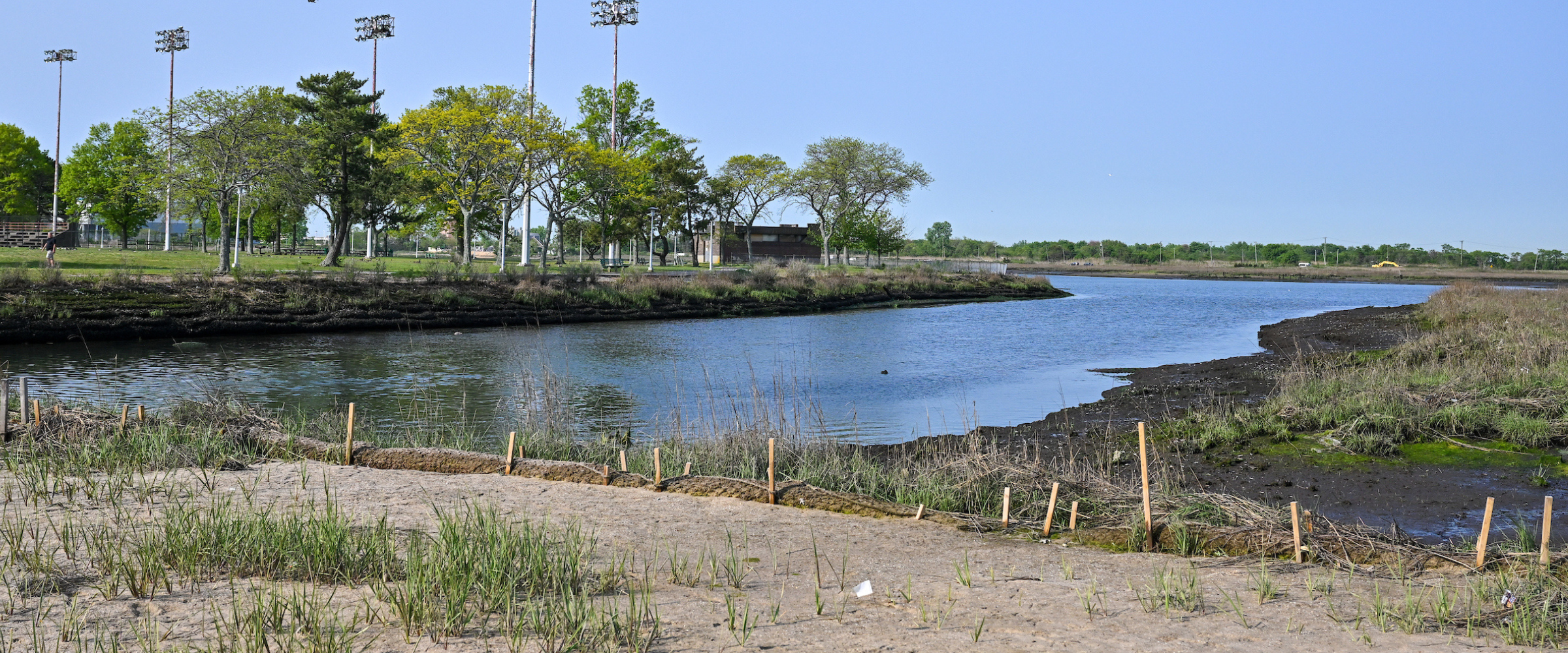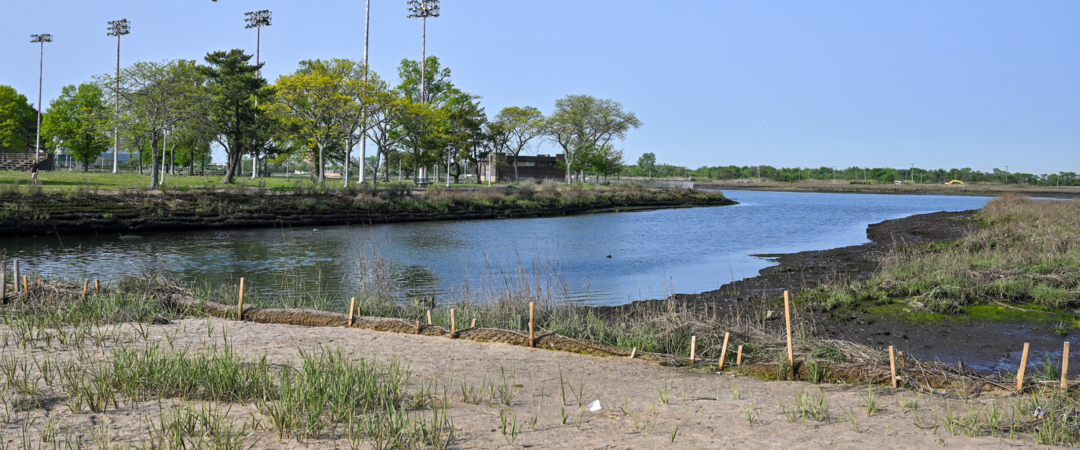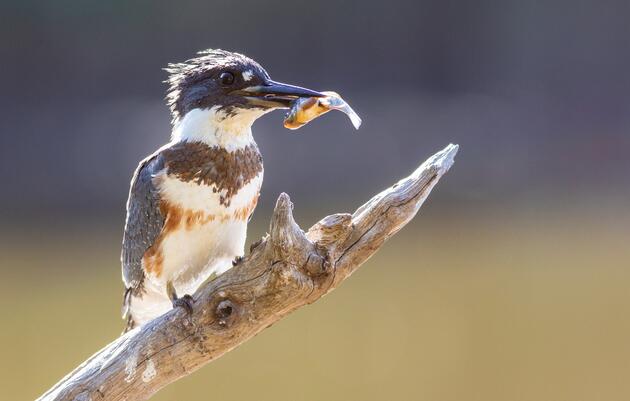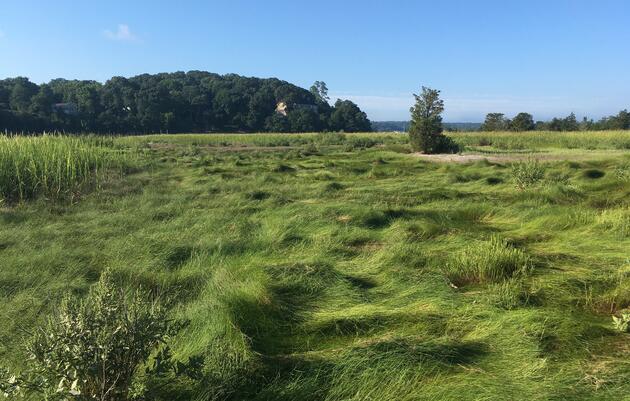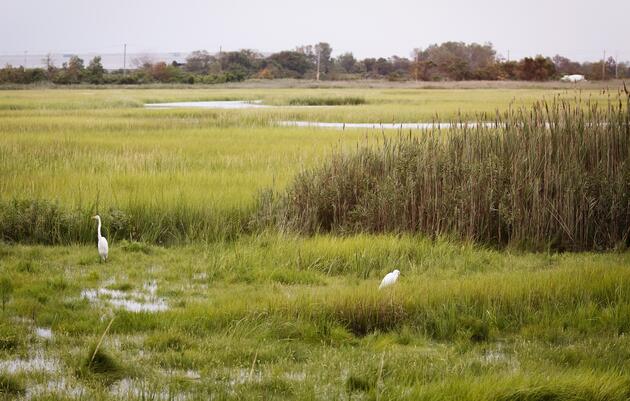The transformation underway at Hook Creek Park in Rosedale, next-door to JFK airport, is obvious to see for anyone walking or driving by. An area which was once grassy is now covered with sand, and Great Egrets and Yellow-crowned Night Herons stand out as they watch for fish along the water's edge.
What's not so obvious is why this work is happening. The rapidly declining Saltmarsh Sparrow can "tell" you why.
The Saltmarsh Sparrow survives solely in marshes like Hook Creek Park. It nests near to the ground amidst thick grasses, with eggs that float and chicks that know how to climb up the grasses during high tide.
Sadly, this species could go extinct within our lifetimes, and this tells us that salt marshes cannot keep up with sea level rise and need our help.
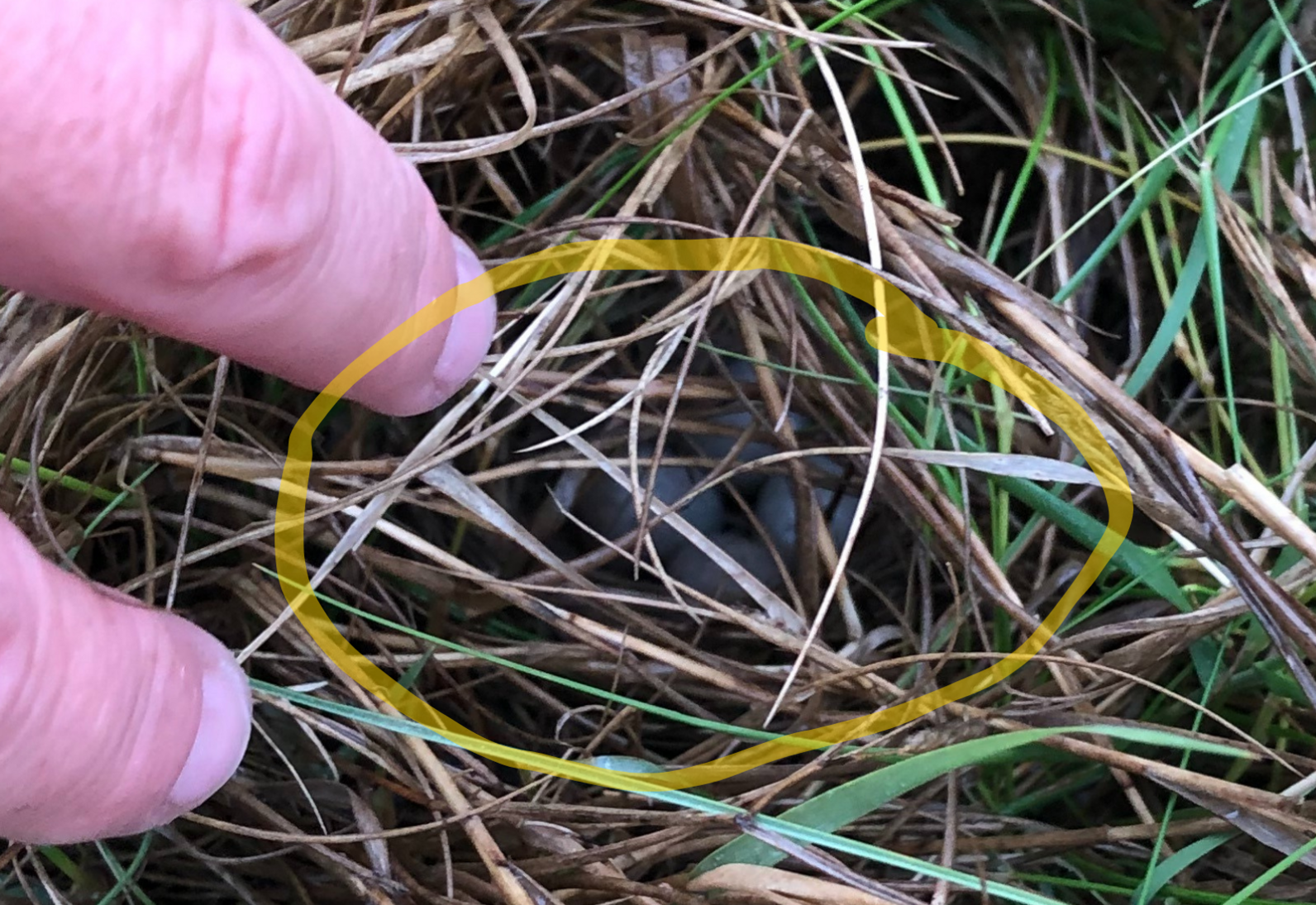
Healthy salt marshes can protect our communities from storm impacts, improve air and water quality, and reduce flooding, making it essential that we build resilience across key coastal areas.
In an exciting step forward, Hook Creek was identified as a critical site for restoration as part of a long-term effort to save salt marshes across the five boroughs of New York City. Over 175 acres of salt marsh citywide have been restored over the past 30 years.

The first phase of work at Hook Creek consisted of a first-ever pilot project, using equipment to shoot sand (sediment) from the hard non-marsh surface into the wetlands. This increased the marsh's base elevation, to help it keep up with sea level rise.
The second phase of the project added around 18,000 native plants to the marsh to restore breeding bird habitat - especially for the Saltmarsh Sparrow. Planted in higher ground thanks to the sediment placement, the new marsh grasses should thrive and the sparrows' nests should no longer drown in the high tides.
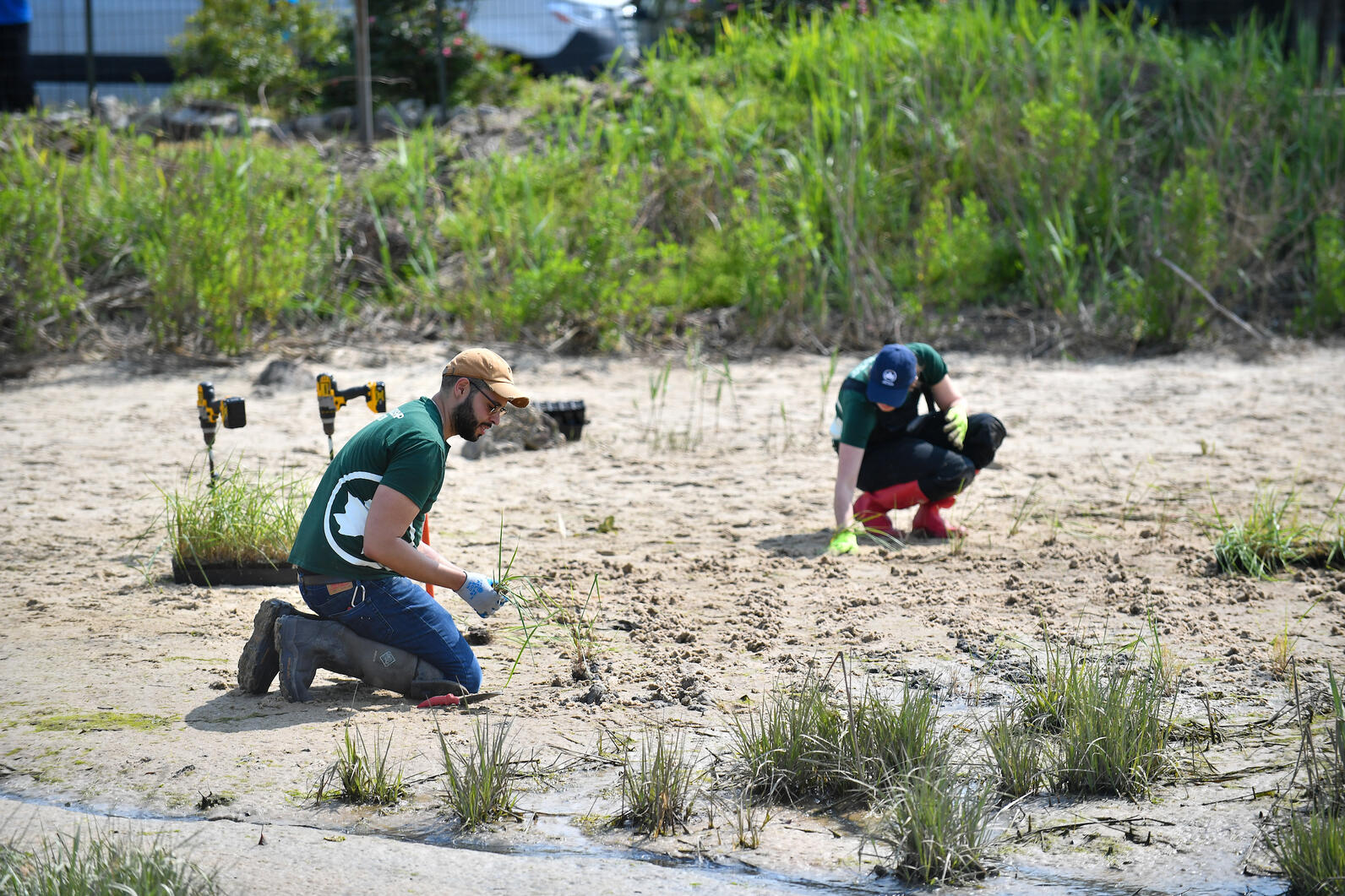
Audubon joined NYC Parks Commissioner Sue Donoghue, Eastern Queens Alliance President Barbara Brown, South Shore Audubon Society, and representatives from the NYC Department of Environmental Protection and Office of the Queens Borough President and Community Board 13 to celebrate the work being done.
Kangela Moore, local resident and President of the Friends of Brookville Park, said, “I live blocks away from this jewel Hook Creek Park. A quiet oasis that is restored to preserve wildlife and mankind right in my backyard. I learned the restoration of the wetlands is critical to the survival of the Saltmarsh Sparrow and to protect my community from flooding. I’m thankful this project is now complete to save the Saltmarsh Sparrow and to provide safety to my neighborhood. I’m thankful to all the partnerships that made this happen."
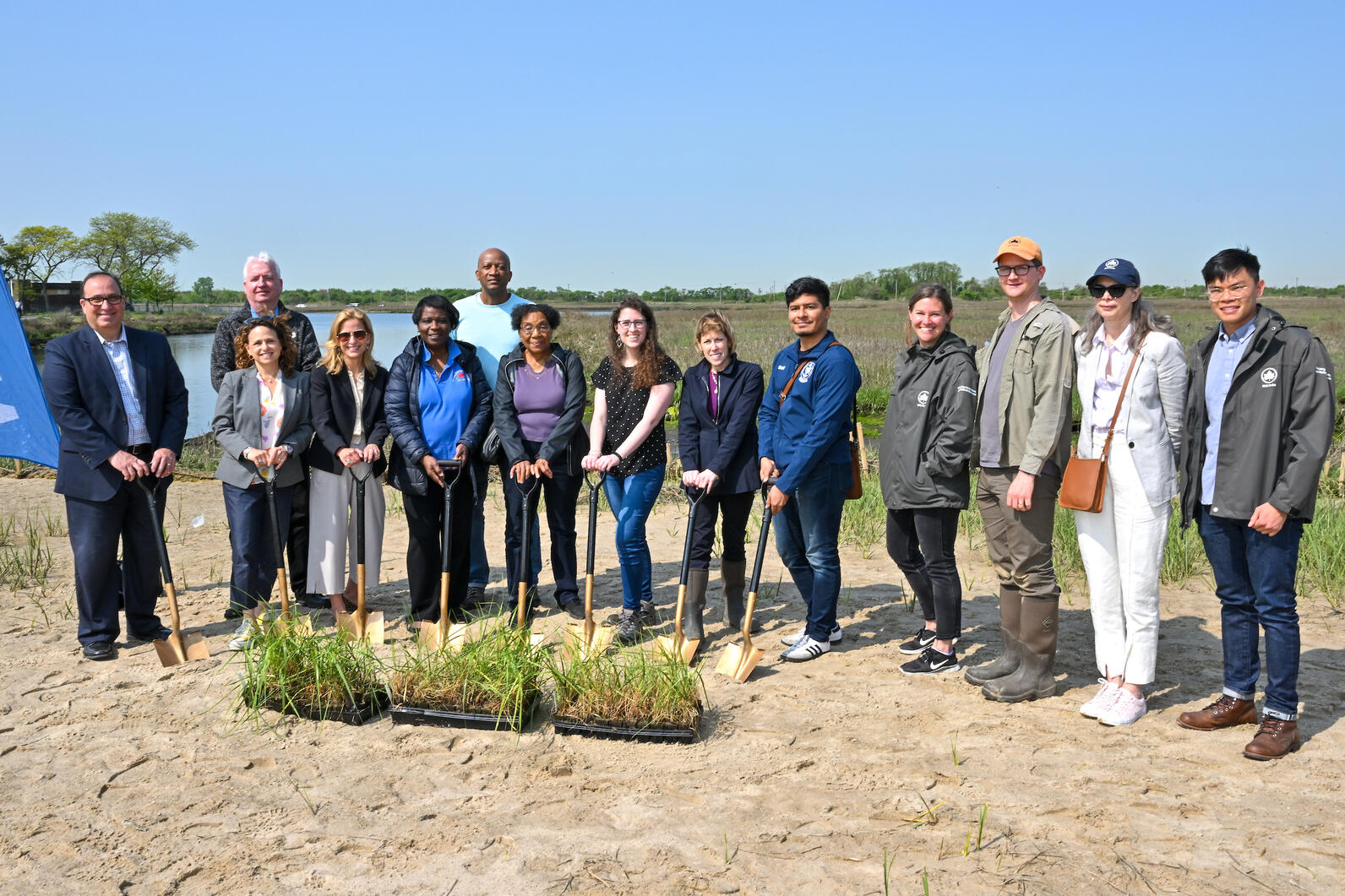
The Hook Creek Park project is being seen as a gateway project, as NYC Parks hopes to continue restoration efforts throughout the rest of the Idlewild marsh area.
“Our wetlands are of vital importance to our city, and their protection and restoration is a crucial part of our efforts to make our city resilient in the face of climate change,” said Parks Commissioner Donoghue. “I'd like to thank our partners at the New York State Department of State, our very own New York City Department of Environmental Protection, and Audubon New York for their support for this project. Through this important work, the wetlands in Hook Creek Park have been thoughtfully restored to preserve the saltmarsh for the benefit of southeast Queens for decades to come.”
MEDIA CONTACT: Sharon Bruce, sharon.bruce@audubon.org
Audubon's contribution to the Hook Creek Wetlands Restoration project was made possible with support from the Wildlife Conservation Society, Schumann Foundation, Gardiner Foundation, and the City of Water Day 2023.

